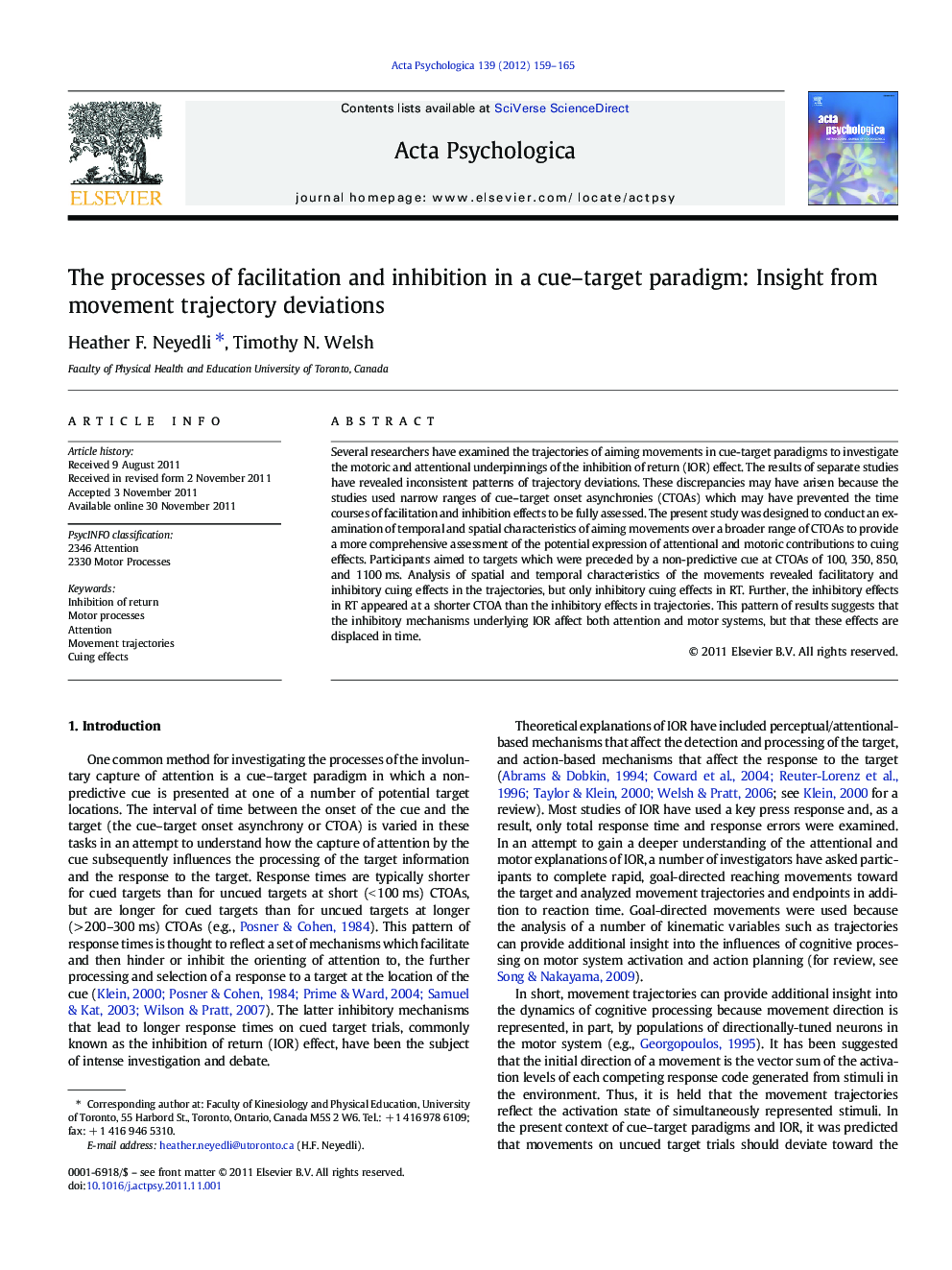| Article ID | Journal | Published Year | Pages | File Type |
|---|---|---|---|---|
| 920104 | Acta Psychologica | 2012 | 7 Pages |
Several researchers have examined the trajectories of aiming movements in cue-target paradigms to investigate the motoric and attentional underpinnings of the inhibition of return (IOR) effect. The results of separate studies have revealed inconsistent patterns of trajectory deviations. These discrepancies may have arisen because the studies used narrow ranges of cue–target onset asynchronies (CTOAs) which may have prevented the time courses of facilitation and inhibition effects to be fully assessed. The present study was designed to conduct an examination of temporal and spatial characteristics of aiming movements over a broader range of CTOAs to provide a more comprehensive assessment of the potential expression of attentional and motoric contributions to cuing effects. Participants aimed to targets which were preceded by a non-predictive cue at CTOAs of 100, 350, 850, and 1100 ms. Analysis of spatial and temporal characteristics of the movements revealed facilitatory and inhibitory cuing effects in the trajectories, but only inhibitory cuing effects in RT. Further, the inhibitory effects in RT appeared at a shorter CTOA than the inhibitory effects in trajectories. This pattern of results suggests that the inhibitory mechanisms underlying IOR affect both attention and motor systems, but that these effects are displaced in time.
► Temporal and spatial characteristics of reaches in a cue-target task were analyzed. ► Non-predictive cue preceded target at 100, 350, 850, or 1100ms asynchronies (CTOA). ► Inhibitory cuing effects were present in reaction time at CTOAs of 350-1100ms. ► Cueing effects were present in the hand trajectories at 100 and 850ms CTOAs. ► Results suggest time lag in attentional and motoric components of IOR.
